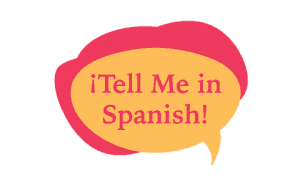Cuál vs qué is a topic that often confuses Spanish learners. Qué inquires about definitions, time, explanations, or identifies something. It’s the direct translation of ‘what’. Cuál means...
Category: Grammar
As a key Spanish verb, it’s essential to understand how and when to use ser. Ser conveys information related to inherent qualities, which are characteristics associated with an object or person’s...
Yo también vs a mí también are often confused since they both mean ‘me too’, ‘too’ or ‘I also’. But in Spanish, yo también expresses agreement with affirmative sentences formed with...
There is a significant difference in the pronouns mi vs mí. Mi is a possessive adjective that works in front of singular nouns, and it means ‘my’. Mí, with an accent, is a pronoun that is...
Del and al are contractions in Spanish that must be used with singular masculine nouns. Al is the contraction of the preposition a + el, whereas del is the contraction of the preposition de +...
El vs él are two different words. El without an accent is a definite article (the) and more often it’s placed before concrete singular masculine nouns. Él with an accent is a pronoun for the 3rd...
Muy means ‘very’. It intensifies the qualities described by an adjective or another adverb. Mucho is the equivalent of ‘a lot’ or ‘very much’, and it conveys the intensity or degree of an...
As key Spanish verbs, mastering the haber vs tener topic is crucial to have effective conversations in Spanish. Son, in this article, you’ll learn the differences and uses of these...
The distinction between Gusta vs gustan often confuses most of my Spanish students. As a singular conjugation, gusta is used with singular nouns or infinitive verbs (a single thing or activity)...
In Spanish, there are some words and phrases that work with the subjunctive. These Spanish subjunctive triggers are essential and useful for identifying when you need to use the subjunctive mood. So,...
Talking about wishes we had or dreaming about what we’d do if our circumstances were different is something many, if not all of us, do. These are some of the things the imperfect subjunctive...
The indicative and subjunctive moods are an essential part of Spanish grammar. Understanding them is crucial because they allow you to talk about actions from different perspectives. So, in this...
Spanish prepositions of place convey precise information about where something or someone is located. Since this type of information is often used in daily interactions, you’ll learn how and when...
As two of the most important verbs in Spanish, understanding the difference between ser and estar is crucial since they allow you to convey basic yet important information. So, the goal of this ser...
Spanish prepositions are essential words that connect nouns or pronouns with other elements while expressing location, time, direction, and more. In short, prepositions are the glue that holds your...
Por vs para is a topic that holds a place of honor among all Spanish tricky words. Confusing these basic prepositions can hurt your fluency and, in some cases, affect the meaning of your sentence....
De is one of the most frequently used prepositions in Spanish since it allows you to express ownership, relationships, and where someone or something is from, among other things. Seeing that its uses...
Have you ever wondered why some Spanish sentences have an extra a before people or pets and why this word has no English translation? Even though it’s never translated, the personal a in Spanish is...
The Spanish subjunctive mood is crucial for delivering messages as simple as wishing a person a good day or giving advice. In short, this verb mood is fundamental to understanding and communicating...
Being able to ask questions in Spanish is an essential and fundamental skill that can be handy in everyday situations. As a result, in this guide, you’ll learn the word order, elements, and rules...
Verb mood in Spanish allows you to convey your perspective about the information you share. In short, understanding how Spanish moods work is crucial to accurately expressing ideas and conveying...
Reported speech is an overlooked yet crucial feature in everyday conversations. In short, it allows you to convey what someone else said adequately. Since mastering this topic can boost your fluency,...
Most Spanish learners struggle to understand when to use estar instead of ser. The problem with these tricky words is that they both mean ‘to be’, and some of their uses seem to overlap. Since...
The present subjunctive Spanish tense is used in ordinary life situations, such as wishing someone a good day or a happy birthday. Simply put, this subjunctive tense is indispensable for proper and...
The present indicative is one of the most basic Spanish tenses. Mastering this tense is not only fundamental for holding simple conversations, but it’s also essential for conjugating to more...
